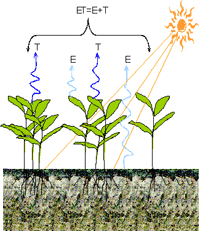Agricultural Research Division of IANR

West Central Research and Extension Center, North Platte
Date of this Version
2013
Citation
J. Anim. Sci. 2013.91:4486–4491 doi:10.2527/jas2013-6465
Abstract
Longevity and lifetime productivity are important factors influencing profitability for the cowcalf producer. Heifers that conceive earlier in the breeding season will calve earlier in the calving season and have a longer interval to rebreeding. Calves born earlier in the calving season will also be older and heavier at weaning. Longevity data were collected on 2,195 heifers from producers in South Dakota Integrated Resource Management groups. Longevity and weaning weight data were collected on 16,549 individual heifers at the U.S. Meat Animal Research Center (USMARC). Data were limited to heifers that conceived during their first breeding season. Heifers were grouped into 21-d calving periods. Heifers were determined to have left the herd when they were diagnosed not pregnant at the end of the breeding season. Heifers that left the herd for reasons other than reproductive failure were censored from the data. Heifers that calved with their first calf during the first 21-d period of the calving season had increased (P < 0.01) longevity compared with heifers that calved in the second 21-d period, or later. Average longevity for South Dakota heifers that calved in the first or later period was 5.1 ± 0.1 and 3.9 ± 0.1 yr, respectively. Average longevity for USMARC heifers that calved in the first, second, or third period was 8.2 ± 0.3, 7.6 ± 0.5, and 7.2 ± 0.1 yr, respectively. Calving period as a heifer influenced (P < 0.01) unadjusted weaning BW of the first 6 calves. Estimated postpartum interval to conception as a 2-yr-old cow was greater for females that calved in the first period as heifers but did not differ between heifer calving periods in subsequent calving seasons. In summary, heifers that calved early in the calving season with their first calf had increased longevity and kilograms weaned, compared with heifers that calved later in the calving season.

